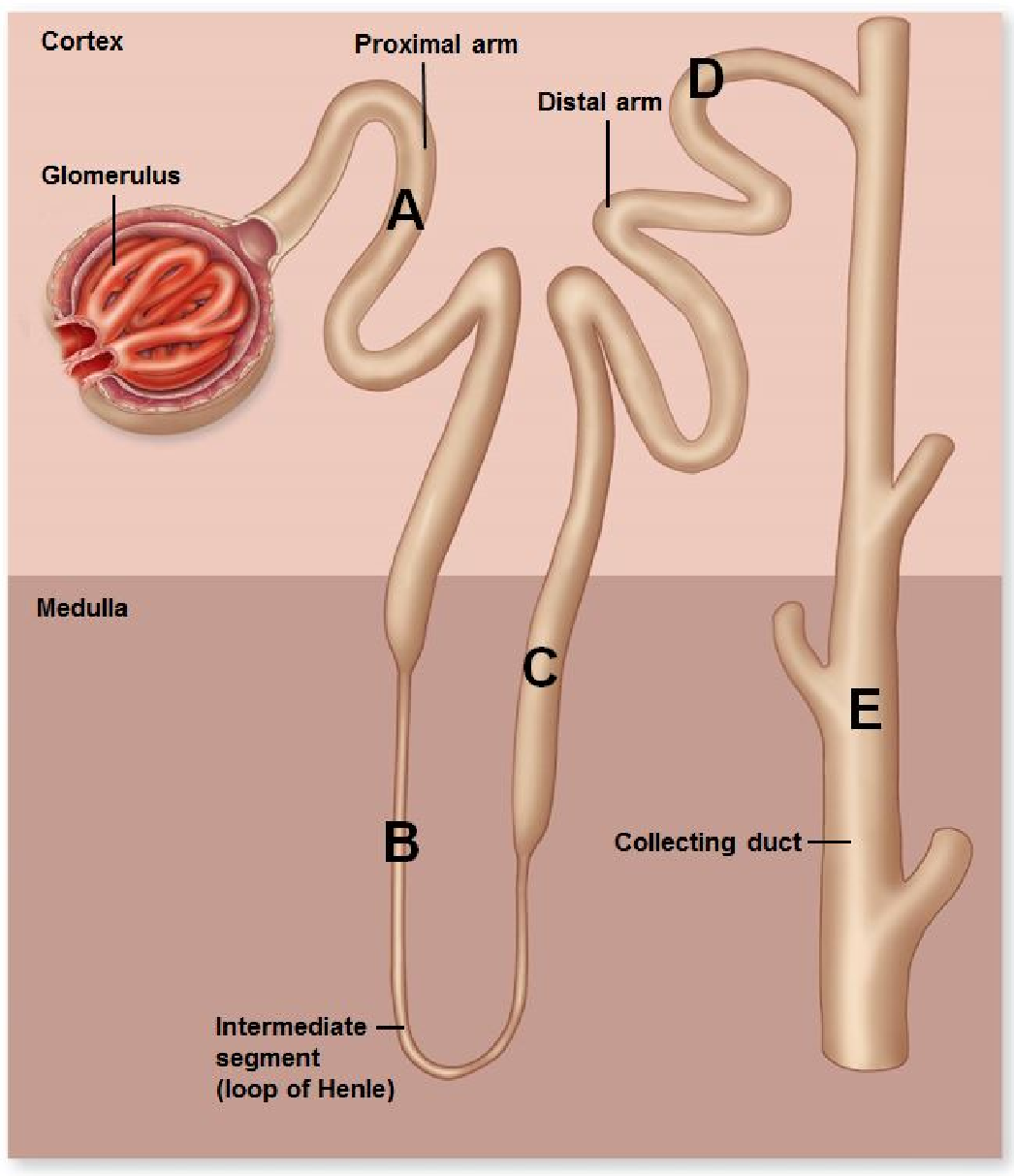According to the below figure, which letter corresponds to the lowest tubular fluid osmolarity under normal conditions?

A. A
B. B
C. C
D. D
E. E
Clarify Question
What is the key concept addressed by the question?
What type of thinking is required?
Gather Content
What do you already know about osmolarity? What other information is related to the question?
Choose Answer
Given what you now know, what information is most likely to produce the correct answer?
Reflect on Process
Did your problem-solving process lead you to the correct answer? If not, where did the process break down or lead you astray? How can you revise your approach to produce a more desirable result?
D. D
Clarify Question
What is the key concept addressed by the question?
· This question is asking where osmolarity is lowest in a nephron.
What type of thinking is required?
· Apply level:
o You are being asked to take what you already know and use, or apply, it to the osmolarity of fluid in different regions of the nephron.
Gather Content
What do you already know about osmolarity? What other information is related to the question?
· Osmolarity is the solute concentration of a solution.
· Osmolarity changes as fluid moves through the kidney.
· Solutes are reabsorbed from fluid in the kidney in the loop of Henle.
· Water is reabsorbed in the loop of Henle and in the collecting duct.
Choose Answer
Given what you now know, what information is most likely to produce the correct answer?
· Sections A, B, and C in the diagram show the nephron structure before and in the loop of Henle.
· Since solutes are still present at higher concentrations in before and as fluid moves through the loop of Henle, osmolarity is relatively high here.
· Section D is a region where osmolarity would be lowest, as solutes have been removed, but not all water has been reabsorbed yet.
· Section E, the collecting duct, would have increased osmolarity due to the reabsorption of water in this region.
Reflect on Process
Did your problem-solving process lead you to the correct answer? If not, where did the process break down or lead you astray? How can you revise your approach to produce a more desirable result?
· Apply level:
o Answering this question correctly depended on your ability to use the changes that occur in tubular fluid in a new situation. If you got an incorrect answer, did you remember that solutes are reabsorbed in the loop of Henle, or that water is reabsorbed in the loop of Henle and also in the collecting duct? Did you have trouble extending the nature of the tubular fluid to determine the correct answer?
You might also like to view...
Isoelectric focusing
A. directly reveals the identity of unknown proteins in a complex mixture. B. separates proteins based on the pH at which they are electrically neutral. C. separates proteins based on their size and shape. D. focuses the data gathered onto a specific protein or ORF.
In the Grand Canyon, in the southwestern United States, there are many species of squirrels, including the Albert squirrel and a "subspecies," the Kaibab squirrel (isolation is not complete, according to the biological species definition by Ernst Mayr). The two populations of squirrels can interbreed to produce fertile offspring, but the populations exist on different portions of the rim of the Grand Canyon, separated by the canyon and the Colorado River. This is an example of speciation.
A. parapatric B. allopatric C. sympatric D. postzygotic E. prezygotic
What is the medullary index and what does this measurement indicate?
What will be an ideal response?
Injured cells release chemicals that trigger expansion of blood vessels as well as movement of blood and immune system cells into the area. This response is the
A. inflammatory response. B. specific immune response. C. temperature response. D. complement system response.